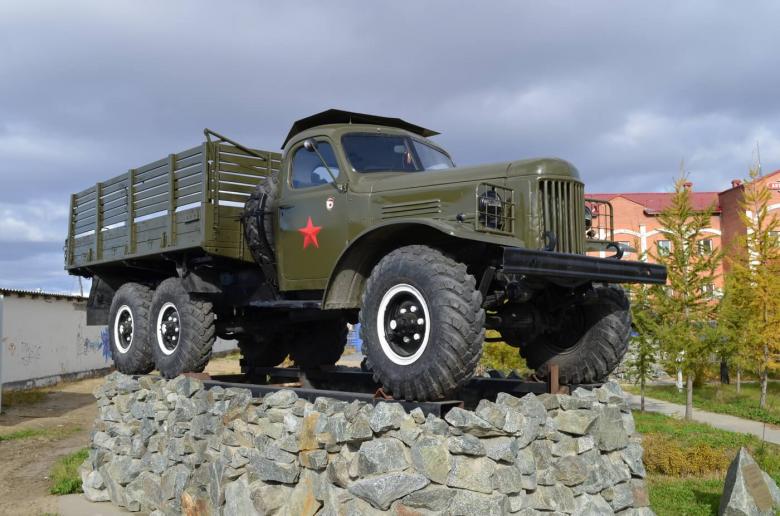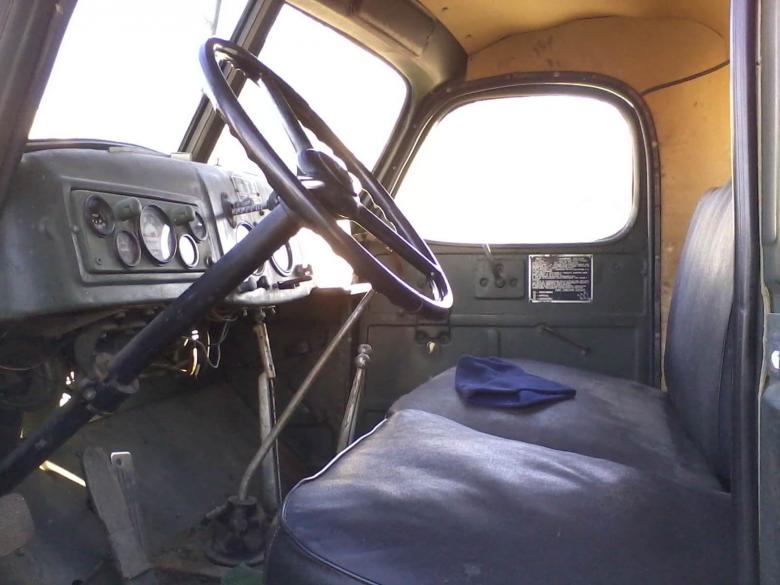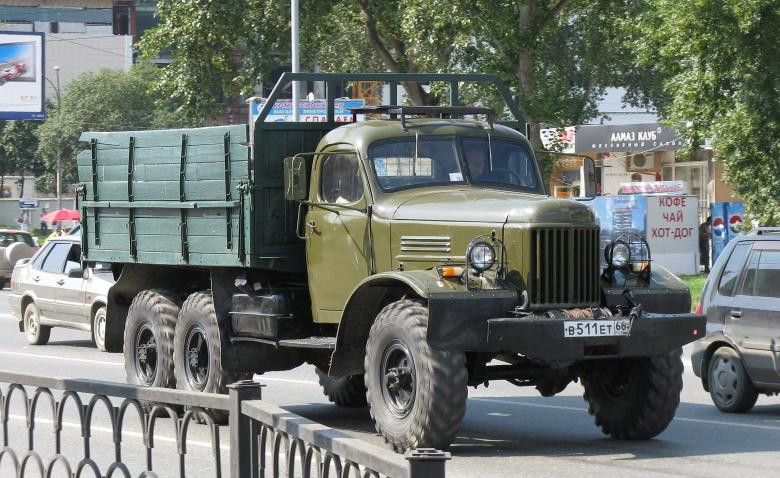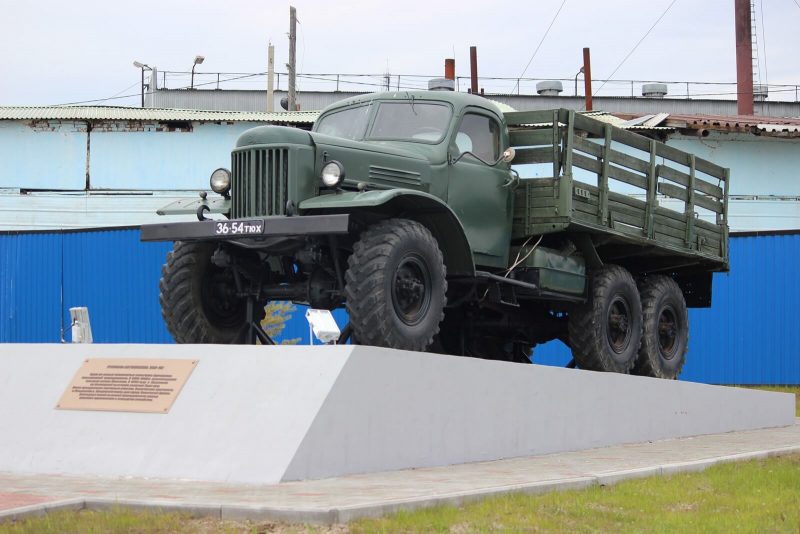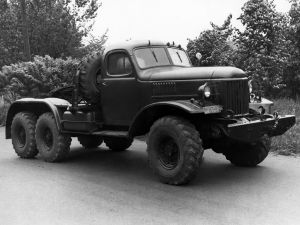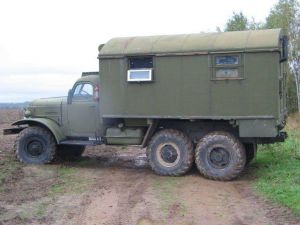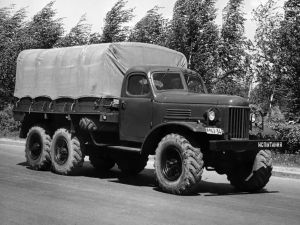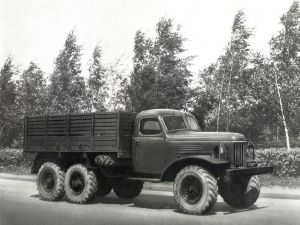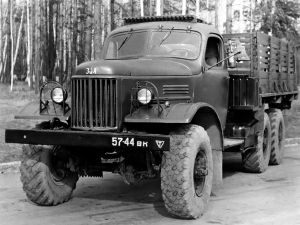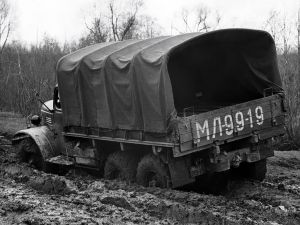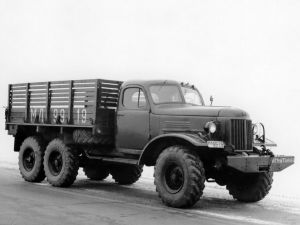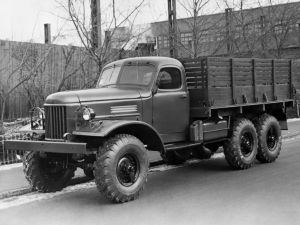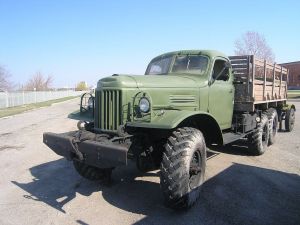ZIL-157
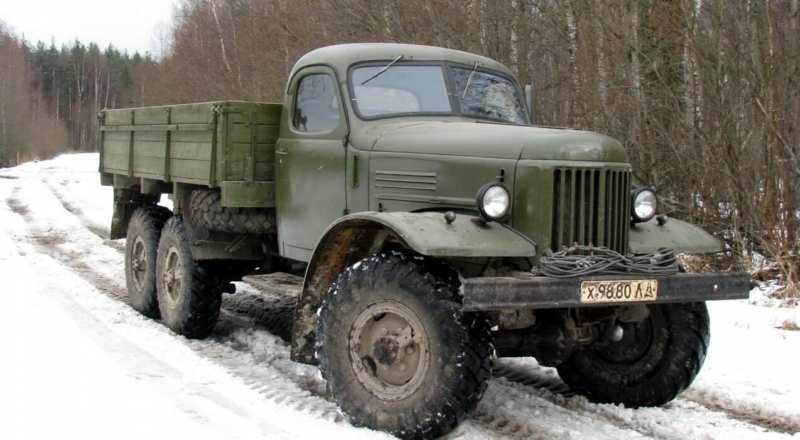
The legendary ZIL-157 continues its work even despite the fact that the production was finished in 1992. Off-road truck will impress car enthusiasts with its qualities and abilities. The truck has a rich history, being involved not only in military units, but also in the economy. The whole model range is ZIL.
Car history
The impressive size of the truck was marked as “ZIL-157” by the Likhachev plant. The world saw the novelty in 1958 at the exhibition of automotive equipment in Brussels, France. The first modifications of the car appeared in the same year, coming down from the conveyors of the plant of the same name.
Then the model was used both for civil and military needs. Drawings were designed on the basis of already existing model “ZIS-151”, but with significant improvements. It was from this model that a model of the cabin was taken in accordance with the improved elements.
After four years of production, the car was improved and the axle load redistributed, and as a result the index changed to ZIL-157K. In 1978, the truck conveyor was transferred to the Ural Automobile Plant, and the model itself got an even longer name “ZIL-157KD”.
In this form of production continued until 1994. The car, as never before, was and remains relevant for our roads, as the cross-country ability of the car with three axles – at height. From the moment of the termination of manufacture has passed already more than 20 years, but till now the car bears the hard service in many divisions of national economy. Amateurs restore old cars and sometimes find the most unusual application for this retro model.
Cabin and bodywork
The model had a three-sided bodywork with the possibility of opening on three sides, which facilitated the loading/unloading process. ZIL-157 became especially popular in the Soviet army due to its cross-country ability and high endurance indicators, which explains its mass spread.
In the cabin of the previous model, the driver could not count on comfortable work, landing was uncomfortable, there was no heater, ventilation was poor. In addition, the driver’s hands were subject to significant impacts from the wheels.
On the new truck the designers tried, if not to get rid of the shortcomings completely, then, at least in part, to improve the ergonomics of the cabin and steering. The driver’s seat, which is distinguished by its comfortable fit, is adjustable. Over the years, the ZIL-157 cab has undergone minor changes, retaining its original characteristics. It was an all-metal construction and allowed the driver and two passengers to fit freely.
There was a round hatch on the roof. The list of elements of the dashboard of the all-terrain truck included a switch of turns, a windscreen wiper valve, a control handle of the radiator blinds, a pressure gauge of the braking system and a pressure gauge in the tires and a small instrument panel. The speedometer had an honorable place on the larger dial.
Other sensors and indicators of the machine’s operating systems:
- Cooling system temperature sensor;
- Ammeter;
- Fuel tank level indicator;
- Pressure gauge for monitoring the lubrication system;
- Lamp to control the high beam of headlamps;
- Indicator lamp for direction indicators;
- Two shield light bulbs.
Underneath the panel there is a taps for adjusting the tire pressure. To control the truck in the cabin are installed gas pedals, clutches and brakes, starter pedal, foot switch light.
There were also handbrake levers, gear shifting, front axle actuation, winch control. The appearance of the car was also interesting. Long and slightly pointed buffer part, wide flat wings, single wheels – everything was very harmonious.
The three-seat cabin had a height of more than 2 meters, there were no windows in it. The round headlights were placed on the side wings and were protected by a metal grille. The main color was khaki, as most of the cars were produced for the needs of the USSR army. The body of the car was a wooden platform covered with longitudinal metal ribs protecting it from abrasion.
The boards were assembled from 20 mm thick and 80 mm wide wooden plates. For durability, the longitudinal structure was strengthened by transverse bars with metal brackets. The front side was fixed, and the side and rear sides were tilted, thus fully opening the platform of the body. Thus, the loading and unloading of military and other equipment was easy and quick.
Specifications
Technical indicators of “ZIL-157”, despite the fact that the model appeared in the Soviet era, are still relevant now. The truck is used in Altai, the Far North, Central Asia, Ukraine and other countries not only in the post-Soviet space. Moreover, the key advantage of the car is the highest cross-country ability.
Powertrain
The ZIL-157 engine, technical characteristics and internal filling of the car were changed. The six-cylinder engine was installed on a new aluminum alloy head, changed the carburetor, improved the cooling system. The new oil pump and the change of crankshaft glands design modernized the lubrication system.
Transmission
The car was originally fitted with a five-speed gearbox, where the fifth gear was an overdrive gear, but after 1961 it was removed. Based on the ZIS-151 transfer case, it received wear-resistant pinions, new glands and forced switching on.
The cardan gear was completely redesigned, and an intermediate support for the rear axle cardan was fixed on the middle axle. The axle semi-axle housings of the drive axles were significantly strengthened, wheel hubs and brakes of the new design were installed, and the wheels were mounted on eight studs.
The diesel engine D245-12C was installed on a trial basis.
Dimensions and wheels
The wheelbase of the car has undergone a significant reconstruction. Instead of the ten wheels that were on the ZIS-151, there were only six wheels. And instead of two spare wheels, now there is one. New tyres were specially developed, the inner layers of which were made of soft rubber, the width of the profile was increased, and the number of cord layers was reduced. The tire pressure was centralized, and management was carried out directly from the driver’s seat. Wheels “ZIL 157” had a deep tread of directional action, almost eliminating slippage.
For the first time in the domestic automotive industry the truck was equipped with a pumping system that regulates the tire pressure. Punctures and small punctures in the wheels did not affect the running of the machine, the compressor automatically pumped the necessary amount of air, compensating for the lack of pressure. The pumping mechanism could also be activated from the driver’s seat.
For a more comfortable ride on different surfaces (swamps, sands, etc.) it was possible to change the pressure in the tires, increasing and, when overcoming obstacles, returning to normal. It is noteworthy that all processes could be carried out on the move.
Carrying capacity
- The maximum load on the passport is 4.5 tons;
- Trailer – 2.5 tons;
- The car weighs 5540 kilograms in full equipment.
Modifications
- ZIL-157 is the standard version;
- ZIL-157B – classic truck tractor;
- ZIL-157K – basic version since 1961;
- ZIL-157KV – basic truck tractor since 1961;
- ZIL-157Y – tropical modification;
- ZIL-157G – model with shielded equipment;
- ZIL-157KG – version with shielded equipment, which entered the series in 1961;
- ZIL-157E – export modification;
- ZIL-157E – a special version equipped with two gas tanks with a total capacity of 300 liters;
- ZIL-157KD – basic version since 1978;
- ZIL-157KDV – basic truck tractor since 1978.
- PMZ-27 – fire truck. Especially for this modification were designed wide rear doors for the convenience of the rescue team.
At one time, data on model improvements were not available for review. ZIL-157, whose photos were not published anywhere, was classified, like any military equipment of that time.
The pros and cons
The parameters of the main assemblies and units of ZIL 157 met the highest requirements of the time. Since the machine was produced for the Soviet Army, no expense was spared for its production. Thus, “ZIL 157”, the characteristics of which did not need improvement, but had only some flaws, was assembled on the conveyor belt according to the classical scheme, without changing the technology for years.
- The main disadvantage of the car is the lack of hydraulic power steering, but the popularity of the truck in the domestic market is not significantly affected.
- Single wheels with the formula 6×6 and the ability to regulate the pressure had a positive impact on the increased cross-country ability of the truck – there are no obstacles for it even in modern times.
- The truck was equipped with a winch for self-pulling. This distinguishes the truck from its ancestor.
- In winter, the cabin could be heated, and in summer it could be aired – for cars of the sixties it was a real progress.
- For ZIL-157, fuel consumption per 100 km is 42 liters of gasoline*, which is quite a bad side of the car.
- Despite the simplicity of design and a high resource, the “king of the road” sometimes breaks down. However, the current owners of the all-terrain vehicle should not worry, spare parts “ZIL 157” is on sale in sufficient quantities.
We sum up
In total, over the years of production almost 798 thousand of these cars have been collected. The use of ZIL-157 has made an invaluable contribution to the development of the country’s economy. Not many of these trucks have survived to our days, but they are still there. Most of them are in personal use of individual entrepreneurs and in the sphere of small business. Nowadays, there is even such a kind of service as renting out a car for fans of extreme sports, so that they can experience the quality of the truck in dangerous and difficult terrain.
And this service is in high demand. Some are attracted by nostalgic memories, while others are simply thrilled. Taking into account all the above mentioned “ZIL-157” hasn’t outlived itself yet, moreover, it’s not going to rest. The price of the version of the 80s of the last century in a radius of 50 000 – 80 000 Russian rubles. The latest versions of the 90s with the run cost an average of 120000 – 150000 Russian rubles.
We advise you to read the article: ZIL – history of the autogiant
SIL-157 photos
ZIL-157 off-road
Video overview


